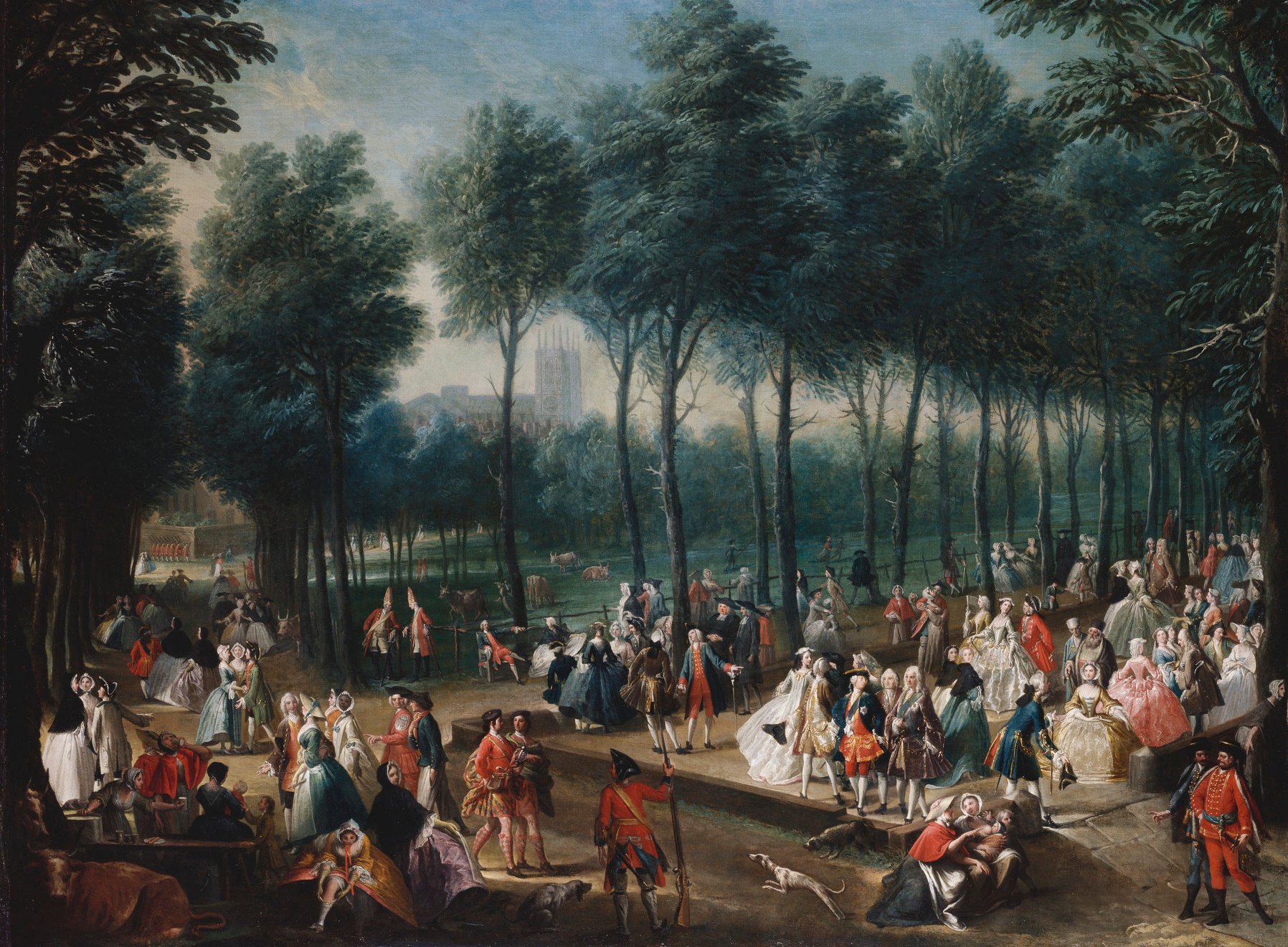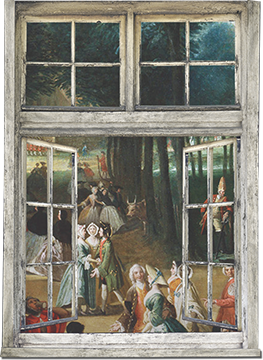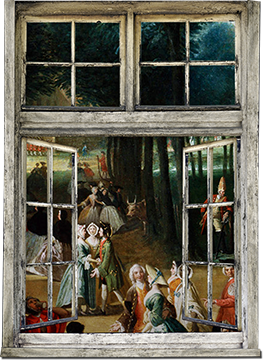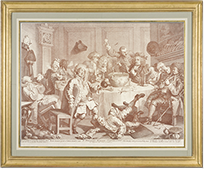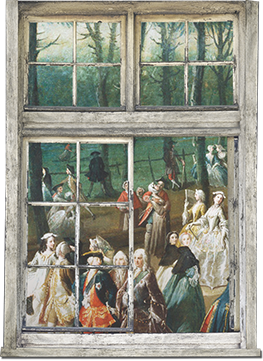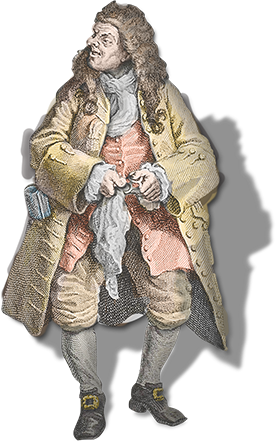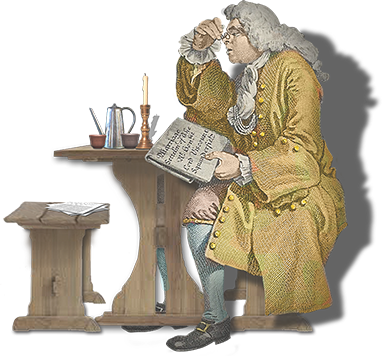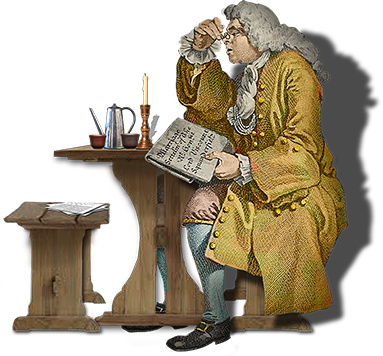



Welcome to our interactive Georgian Coffee House
The first coffee houses opened in London in the mid-seventeenth century and by the early
Georgian period they were well established as hubs of social interaction.
Women and children were not allowed in coffee houses but men visited them regularly
to drink coffee and meet with friends, read newspapers and engage in a lively debate.
By the 1740s there were over 500 coffee houses in London. Not only were these places
to meet and exchange ideas and information, but they also frequently served as venues
for the business of buying and selling goods.
Georgian society displayed a love of liberty and new knowledge, enjoying freedom of thought,
conscience, expression, ownership and trade. The culture of the Georgian coffee house reflected
these principles and in many ways marks the beginning of modern Britain.


The Bad Taste of the Town
(Masquerades and Operas)
William Hogarth, 1724
A satirical print ridiculing the 'reigning follies' of fashionable London.
At the centre is a waste-paper hawker, whose barrow is filled with the great names of British literature - Shakespeare, Dryden, 'Congrav' [William Congreve], Addison and Otway. A reference to 'Pasquin' (a figure associated with satire) has been scratched out - in subsequent impressions it would be replaced with Ben Jonson's name.
To either side, crowds flock to entertainments in 'Bad Taste'. Among them are Burlington House in Piccadilly (sarcastically named the 'Accademy of Arts'), a conjuring display by the popular magician Isaac Fawkes and a masquerade, into which a crowd is ushered by a satyr and a fool.
Italian opera is ridiculed in the figures of the fashionable opera singers Francesca Cuzzoni, Francesco Bernardi (Senesino) and Gaetano Berenstadt, who are shown on a large banner performing Handel's 'Flavio'. The verses at the foot of the sheet are printed from a separate plate.
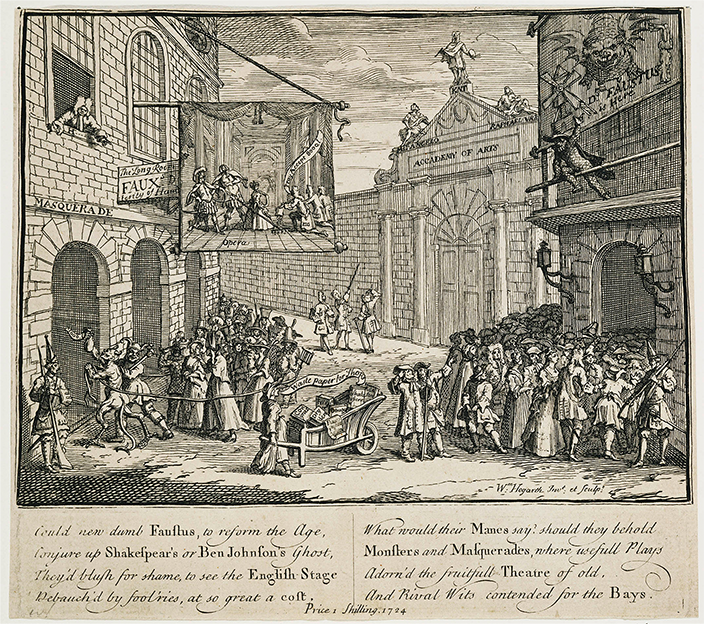

A Midnight Modern Conversation
William Hogarth, 1733
A print showing a drunken scene in a coffee house.
Hogarth warned against finding individual likenesses in this depiction of drunks, noting that 'We lash the Vices but the Persons spare'. His title mocks the fashionable 'Conversation Piece' group portrait.
This impression is one of a number printed in red for print collectors who sought out interesting impressions. Hogarth was as aware of his market as of the follies of his peers.
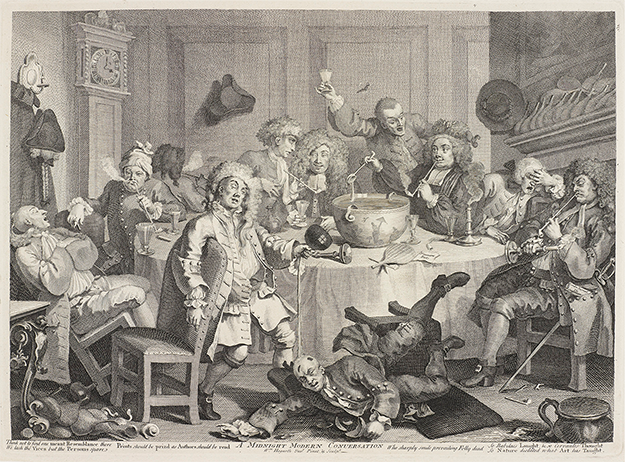

British School
St James's Park and the Mall
Oil on canvas, c. 1745
This is a telling image of Enlightenment London - a place where princes walk in public parks and where people of all races, ranks and religions rub shoulders. This masterpiece of gently satirical people-watching was once thought to be by Hogarth but now lacks an attribution.
